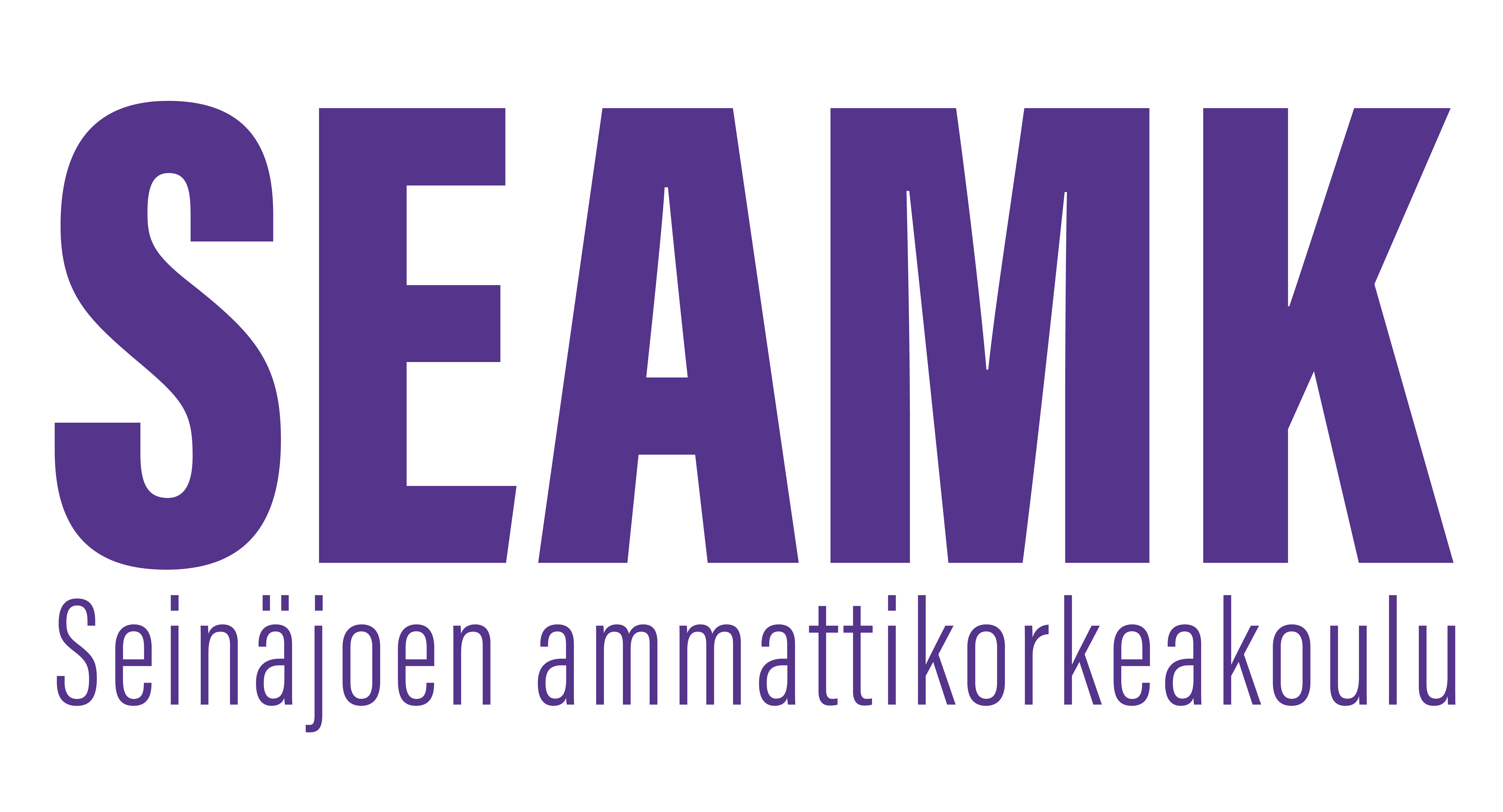Englanti (3op)
Toteutuksen tunnus: SH00DM72-3003
Toteutuksen perustiedot
- Ilmoittautumisaika
- 22.04.2024 - 03.09.2025
- Ilmoittautuminen toteutukselle on päättynyt.
- Ajoitus
- 01.09.2025 - 21.12.2025
- Toteutus on päättynyt.
- Opintopistemäärä
- 3 op
- Lähiosuus
- 3 op
- Toteutustapa
- Lähiopetus
- Yksikkö
- SeAMK Sairaanhoitaja ja terveydenhoitaja
- Toimipiste
- SeAMK Seinäjoki, Kampustalo
- Opetuskielet
- englanti
- Koulutus
- Sairaanhoitaja (AMK)
Arviointiasteikko
1-5
Tavoitteet
Opiskelija
- osaa englannin kielellä kertoa itsestään ja hoitotyön koulutuksestaan.
- osaa käyttää hoitotyön englannin kielistä sanastoa kuvaillessaan tervettä ja sairasta ihmistä sekä haastatella ja esitellä potilaansa elämäntilanteen ja tilan.
- osaa kertoa suullisesti ja kirjallisesti suomalaisesta sosiaali- ja terveydenhuollon palvelujärjestelmästä sekä kuvailla sairaalan/terveyskeskuksen toimintaa.
- osaa ohjata ja neuvoa potilasta erilaisissa hoitotyön tilanteissa, käyttää erilaisia strategioita vuorovaikutustilanteissa sekä osaa huomioida puhekumppanin englannin kielen taidon omassa viestinnässään.
- osaa käyttää eri tapoja englannin kielisen tekstin lukemiseen ja osaa lukea erityyppisiä tekstejä.
Suoritustavat
kontaktiopetus, itsenäinen opiskelu, loppukoe/ lopputehtävä
Kurssi edellyttää osallistumista pari- tai ryhmätyöskentelyyn, suullisia esityksia esim. potilas/ asiakas + hoitajatilanteet.
Sisältö
Hoitotyön englanninkielinen sanasto.
Erilaisten tekstityyppien lukutaito.
Kirjoittamisen ja erilaisten hoitotyölle tyypillisten vuorovaikutustilanteiden harjoittelu.
Terveyden edistäminen, yleisimmät sairaudet, suomalainen sosiaali- ja terveydenhuoltojärjestelmä sekä potilaan kohtaaminen englannin kielellä.
Aika ja paikka
Tunnit lukujärjestyksen mukaisesti pääsääntöisesti kampuksella.
Oppimateriaalit
oppikirja: Dear Patient - English for Nursing (M. Karhumäki, M. Metsäportti, P. Tuohimäki, Sanoma Pro 2017)
verkkomateriaalit
Opetusmenetelmät
Kontaktiopetus ja Verkko-opetus (Moodle).
Itsenäinen sekä yhteistoiminnallinen opiskelu (osallistuminen yhteisiin aktiviteetteihin omatahtisesti).
Tenttien ajankohdat ja uusintamahdollisuudet
Kirjallinen tentti kurssin lopussa viimeisellä tunnilla (paperitentti).
Uusinta EXAMissa sähköisenä tenttinä.
Opiskelijan ajankäyttö ja kuormitus
3op = 3 x 27h = 81h opiskelijan työtä. (Tämä on arvio ja lopullinen ajankäyttö määräytyy opiskelijan tämänhetkisten englannin taitojen mukaan.)
36h kontaktiopetusta, loput itsenäinen tai ryhmä/parityöskentely
Läsnäolovaatimus: vähintään 80% kontaktiopetuksesta. Poissaolot vaikuttavat loppuarvosanaan.
Arviointikriteerit, tyydyttävä (1)
1-2
Opiskelija selviytyy rutiiniluonteisissa, suullisissa ja kirjallisissa vuorovaikutustilanteissa moniammatillisessa työyhteisössä (esim. sähköposti, lomakkeiden täyttö, CV, työyksikön esittely). Opiskelija antaa yksinkertaisia, suullisia ja tarvittaessa myös kirjallisia ohjeita erilaisille asiakkaille /ryhmille, kysyy potilaalta/asiakkaalta tämän nykyiseen ja aiempaan terveydentilaan/ elämäntilanteeseen liittyviä, välttämättömiä tietoja sekä kirjaa potilaan/ asiakkaan antamat vastaukset oikein hoidon tai jatkotoimenpiteiden onnistumiseksi. Opiskelija ymmärtää omiin työtehtäviinsä liittyviä sosiaali- ja terveysalan tekstejä. Hän tekee kielen keskeisissä rakenteissa virheitä mikä vaikeuttaa viestintää ja voi aiheuttaa väärinkäsityksiä ja vaatii asian toistoa, käyttää sosiaali- ja terveysalan perussanastoa niin että tarpeelliset tiedot välittyvät kuulijalle ja lukijalle, ääntää ymmärrettävästi, mutta epätarkkuuksia saattaa esiintyä erityissanastossa, löytää etsimänsä tiedon teksteistä, jotka käsittelevät tuttuja aiheita ja turvautuu yleisesti käytettyihin apuvälineisiin viestinnässään.
Arviointikriteerit, hyvä (3)
3-4
Opiskelija viestii suullisesti ja kirjallisesti moniammatilliselle työyhteisölle tyypillisissä tilanteissa (esim. puhelinkeskustelut, osaston ulkopuoliset konsultaatiot, suullinen ja kirjallinen raportointi, suullinen esitys esim. vakuutusasiakirjat). Opiskelija selittää ja perustelee yksilölliset potilasohjeet sekä kertoo tavallisimmista toimenpiteistä ja tutkimuksista, selvittää potilaan/asiakkaan tämänhetkistä ja aiempaa terveydentilaa/elämän tilannetta ja tekee tarvittaessa tarkentavia kysymyksiä, kirjaa potilaan/ asiakkaan antamat vastaukset oikein hoidon tai jatkotoimenpiteiden onnistumiseksi sekä vastaa potilaan/ asiakkaan esittämiin kysymyksiin. Opiskelija käyttää rakenteita pääosin oikein ja korjaa itse kielenkäytön virheitä jos ne ovat johtaneet väärinkäsityksiin, käyttää hyvin sosiaali- ja terveysalan keskeistä sanastoa ja melko hyvin oman erityisalansa sanastoa, pyrkii viestimään tilanteen edellyttämällä tyylillä, ääntää melko luontevasti ja selkeästi, löytää silmäilemällä tekstin pääkohdat erilaisista sosiaali- ja terveysalan teksteistä ja käyttää eri keinoja viestinnän tukena.
Arviointikriteerit, kiitettävä (5)
5
Opiskelija viestii täsmällisesti ja tarkoituksenmukaisesti, suullisesti ja kirjallisesti englannin kielellä moniammatillisessa ja -kulttuurissa työyhteisössä vaativissakin vuorovaikutustilanteissa (esim. palaverit, hoitoneuvottelut ja palautekeskustelut). Hän esittelee eri vaihtoehtoja luontevasti ja monipuolisesti asiakkaiden/potilaiden ohjaustilanteessa ottaen huomioon potilaiden/ asiakkaiden kulttuuritaustan. Opiskelija haastattelee asiakkaita/potilaita tilanteen edellyttämällä tavalla ja viestii myös haastavissa ja odottamattomissa asiakas-/potilastilanteissa ammattimaisella tavalla. Opiskelija käyttää monipuolisia rakenteita ja hallitsee ne lähes virheettömästi, käyttää täsmällisesti laajaa sosiaali-/terveysalan kieltä mukaan lukien oman erityisalansa terminologian, ääntää selkeästi ja luontevasti, viestii tilanteen edellyttämällä tyylillä, hahmottaa nopeasti tekstin sisällön arvioidakseen kriittisesti lähteen luotettavuuden ja käyttää tehokkaasti eri keinoja viestinnän tukena.
Arviointikriteeri, hyväksytty/hylätty
Hylätty
Opiskelija ei saavuta tyydyttävän arvosanan tavoitteita opinnoissa.
Esitietovaatimukset
oppikirja: Dear Patient - English for Nursing (M. Karhumäki, M. Metsäportti, P. Tuohimäki, Sanoma Pro 2017)
verkkomateriaalit
Lisätiedot
Orientaatiotunnilla esitellään opintojakson pääteemat (erilaiset hoitotyön kommunikointitilanteet) ja opiskelumenetelmät sekä kerrotaan palautettavien tehtävien kriteerit ja palautusajat sekä opiskelijan työmäärä.
Läsnäolovaatimus: vähintään 80% kontaktiopetuksesta.
Opiskelijan työ:
- tunneille valmistautuminen
- kirjalliset palautettavat tehtävät (ohjaustehtävä sekä itsearviointi)
- suullinen näyttö (osallistuminen pienryhmäkeskusteluihin sekä opintojakson lopussa arvioitava suoritus)
- kirjallinen lopputentti
